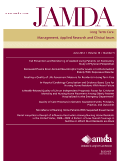
Journal of the American Medical Directors Association
Scope & Guideline
Shaping the future of healthcare for older adults.
Introduction
Aims and Scopes
- Geriatric Care and Management:
Research dedicated to improving the quality of care for older adults, including studies on frailty, cognitive impairment, and chronic disease management. - Pharmacological Interventions:
Investigations into medication management, including polypharmacy, deprescribing practices, and the effects of psychotropic and antidementia medications. - Innovative Care Models and Interventions:
Exploration of new care models, including telemedicine, interdisciplinary approaches, and community-based programs aimed at enhancing patient outcomes. - Quality of Care and Health Outcomes:
Studies assessing the quality of care in nursing homes and long-term care facilities, with a focus on patient safety, health outcomes, and regulatory compliance. - Health Policy and Economics:
Analysis of health policies affecting long-term care, including cost-effectiveness studies and the economic burden of care on patients and systems. - End-of-Life Care:
Research focused on palliative care, advance care planning, and the management of end-of-life issues for elderly patients. - Social Determinants of Health:
Examination of the impact of socioeconomic factors, social isolation, and community resources on the health and well-being of older adults.
Trending and Emerging
- Telehealth and Remote Care:
The surge in telehealth research highlights its role in managing care for older adults, especially during the COVID-19 pandemic, indicating a significant transformation in care delivery. - Technology Integration in Care:
Emerging studies focus on the use of technology, such as AI and virtual reality, to enhance patient engagement, monitor health, and improve care outcomes. - Cognitive Health and Dementia Care:
There is a growing emphasis on cognitive health, with research exploring interventions for dementia care and the relationship between cognition and physical health. - Multimorbidity and Comprehensive Care Models:
The trend is moving towards understanding the complexities of multimorbidity in older adults, advocating for integrated care approaches that address multiple health conditions. - Health Equity and Social Determinants:
Increased attention is being paid to health disparities, social determinants of health, and their impact on care outcomes for diverse populations. - Palliative and End-of-Life Care Innovations:
New research is emerging on innovative practices in palliative care, emphasizing the importance of person-centered approaches and quality of life at the end of life.
Declining or Waning
- Traditional Physical Rehabilitation:
There appears to be a waning emphasis on conventional rehabilitation techniques, as newer studies focus on integrated care models and technology-based interventions. - Single-Condition Focus Studies:
Research concentrating solely on specific chronic conditions is decreasing, with a shift towards multimorbidity and comprehensive care approaches. - Basic Health Services Research:
Less emphasis is being placed on basic descriptive studies of health services, as the journal increasingly prioritizes innovative interventions and their evaluations. - Generalized Fall Prevention Measures:
The discussion surrounding generalized fall prevention strategies is declining, with more focus now on personalized and technology-assisted solutions. - Antibiotic Stewardship in Isolation:
While antibiotic stewardship remains important, there is a decreased focus on isolated studies; instead, research is increasingly integrated into broader quality improvement initiatives.
Similar Journals

Journal of Nutrition Health & Aging
Exploring the intersection of nutrition and geriatric health.Welcome to the Journal of Nutrition Health & Aging, a prestigious publication dedicated to advancing knowledge in the critical fields of nutrition, gerontology, and geriatrics. Published by Elsevier Science Inc, this journal boasts an impressive impact factor and is recognized in the top quartile (Q1) of multiple categories including Geriatrics and Gerontology, Medicine (miscellaneous), and Nutrition and Dietetics. Since its inception in 1997, it has served as a vital platform for researchers, practitioners, and students alike to disseminate innovative research and practical applications relevant to aging populations. With a Scopus rank placing it in the top 15% of its field, it underscores its commitment to high-quality and impactful scholarship. Although it is not an open access journal, its significant reach ensures that valuable insights will continue to inform best practices and policy decisions in health and nutrition. We invite you to explore and contribute to this vital conversation surrounding health and well-being in older adults.
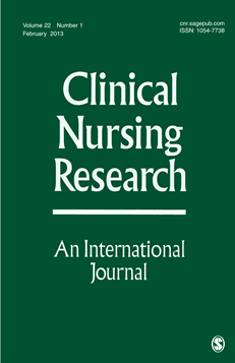
Clinical Nursing Research
Elevating clinical practice with high-quality nursing insights.Clinical Nursing Research is a premier academic journal dedicated to advancing the discipline of nursing through rigorous research and evidence-based practice. Published by SAGE Publications Inc, this journal has been a cornerstone in the field since its inception in 1992, with a commitment to providing high-quality research that informs clinical practice and nursing education. With an impressive Scopus ranking of #40 out of 139 in the general nursing category and a percentile rank of 71, it represents a significant contribution to the nursing literature. Although not an open-access journal, Clinical Nursing Research facilitates access through institutional subscriptions, ensuring that critical findings are disseminated widely. The journal’s objectives include fostering innovation and promoting best practices in nursing, making it an indispensable resource for researchers, practitioners, and students alike. As it continues to evolve through 2024 and beyond, Clinical Nursing Research remains at the forefront of nursing scholarship, addressing the complexities of healthcare in a rapidly changing world.
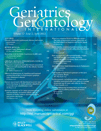
Geriatrics & Gerontology International
Shaping Policies to Improve Elderly Well-BeingGeriatrics & Gerontology International, published by WILEY, is a prestigious academic journal dedicated to advancing the field of geriatric and gerontological research. With a strong focus on the interdisciplinary aspects of aging, this journal has established itself as a leading source of high-quality research, reflected in its impressive impact factor and 2023 Scopus rankings, including a Q1 status in Health (Social Science) and Q2 in both Geriatrics and Gerontology. Since its inception in 2004 and continuous publication from 2008 to 2024, it has fostered a vibrant exchange of ideas among researchers, clinicians, and students alike. The journal serves as a critical resource for innovative studies, reviews, and commentaries that help shape policies and practices affecting the elderly population. It is essential reading for those dedicated to improving the quality of life for older adults and contributes significantly to the understanding of the complexities surrounding aging.

Aging Medicine and Healthcare
Advancing Knowledge to Enhance Elderly CareAging Medicine and Healthcare is a leading Open Access journal dedicated to advancing the understanding of geriatric health and the complexities of aging. Published by the Asia Pacific League Clinical Gerontology & Geriatrics, this innovative journal began its journey in 2019 and has since established itself as an important resource for healthcare professionals, researchers, and students interested in the fields of geriatrics and gerontology. With an impact factor that reflects its growing significance (ranked in the 21st percentile within its category), the journal aims to disseminate high-quality research and practical insights that can inform clinical practice and enhance patient care for aging populations. As an Open Access publication, it ensures that research findings are freely accessible, fostering collaboration and knowledge sharing among academics and practitioners globally. The journal is poised to be a vital platform for innovative studies, systematic reviews, and case reports that illuminate the challenges and opportunities in aging medicine.
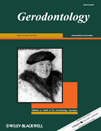
GERODONTOLOGY
Exploring innovative solutions for geriatric dental challenges.GERODONTOLOGY is a leading academic journal published by Wiley, offering a comprehensive platform for the latest research in the fields of dentistry and geriatrics. Since its inception in 1982, this journal has played a pivotal role in disseminating high-quality studies and clinical insights aimed at addressing the unique dental health needs of the aging population. With an established impact factor and recognition as a Q2 journal in Dentistry and Q3 in Geriatrics and Gerontology, it is positioned among the top-tier publications in these disciplines. The journal is indexed in Scopus, demonstrating its commitment to scholarly excellence as evidenced by its rankings—39th out of 132 in Dentistry and 60th out of 116 in Geriatrics. Researchers, healthcare professionals, and students are encouraged to contribute to and engage with content that bridges dental science with geriatric care, ultimately fostering improvements in the quality of life for older adults. Access to the journal is available through subscription, ensuring the latest findings are readily accessible to the global academic community.

CLINICS IN GERIATRIC MEDICINE
Innovating Solutions for Aging ChallengesCLINICS IN GERIATRIC MEDICINE, published by W B SAUNDERS CO-ELSEVIER INC, is a highly regarded journal in the field of geriatric medicine, with an impressive impact factor that underscores its significance in advancing the understanding of health issues among the elderly. Since its inception in 1985, the journal has served as a crucial resource for researchers, healthcare professionals, and students dedicated to improving geriatric care. As recognized leaders in the field, this journal is positioned in the Q1 quartile for Geriatrics and Gerontology, ranking #22 out of 116 in Scopus, placing it within the 81st percentile for scholarly impact. Although it is not an open-access publication, it provides unparalleled insights into current research trends, clinical practices, and innovative solutions for geriatric challenges. This comprehensive platform is essential for those committed to enhancing the quality of life for older adults and shaping the future of geriatric medicine.

BMC Geriatrics
Innovating care, enriching lives in geriatrics.BMC Geriatrics is a leading open-access journal dedicated to advancing the field of geriatrics and gerontology. Published by BMC, this esteemed journal has been at the forefront of research since its inception in 2001, providing a vital platform for sharing innovative studies and insights that address the complexities of aging. With an impressive Q1 ranking in the 2023 category of Geriatrics and Gerontology and a solid Scopus ranking at #40 out of 116, BMC Geriatrics showcases high-impact research that influences clinical practices and policy-making. As a fully open-access publication, it ensures that groundbreaking research is freely available to researchers, practitioners, and students alike, promoting the diffusion of knowledge across the global healthcare community. This journal is crucial for anyone interested in the latest developments in elderly care, health issues affecting aging populations, and innovative interventions designed to improve quality of life among older adults.
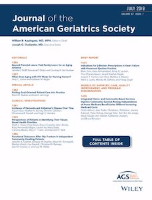
JOURNAL OF THE AMERICAN GERIATRICS SOCIETY
Empowering Healthcare Professionals in GeriatricsJOURNAL OF THE AMERICAN GERIATRICS SOCIETY, published by Wiley, stands as a leading resource in the field of geriatrics and gerontology. Established in 1953 and converging into a comprehensive academic platform through 2024, this esteemed journal is recognized for its high impact, holding a Q1 ranking in its category for 2023. It serves as a vital conduit for innovative research, clinical practices, and policy discussions aimed at improving the health and well-being of older adults. With a commitment to advancing geriatric medicine, the journal contributes significantly to the ongoing dialogue among researchers, healthcare professionals, and students dedicated to this rapidly evolving field. Although currently not offering open access options, the journal remains invaluable for those seeking to access pivotal studies and reviews that shape the future of geriatrics.
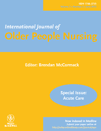
International Journal of Older People Nursing
Pioneering Research for Better Aging Solutions.The International Journal of Older People Nursing is a pivotal publication in the field of gerontology, focusing on the unique nursing care and health challenges faced by older adults. Published by WILEY and based in the United Kingdom, this journal aims to disseminate innovative research and practice insights from 2010 to 2024, making it an essential resource for academics and practitioners alike. With an impressive 2023 Category Quartile of Q2 in Gerontology, the journal ranks in the top tier of its field, placing it at 15th among 39 journals in Nursing Gerontology according to Scopus. The journal is committed to providing a platform for rigorous scientific inquiry, facilitating improvements in nursing practices, and promoting evidence-based care for older adults. Researchers, professionals, and students can benefit from the high-impact contributions that address the complexities and richness of aging, thus enhancing the quality of care and life for older populations.
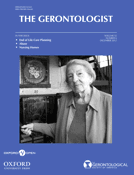
GERONTOLOGIST
Exploring New Frontiers in AgingThe GERONTOLOGIST, published by Oxford University Press Inc, is a premier journal in the field of geriatrics and gerontology, with a distinguished history since its inception in 1961. This esteemed journal stands out with its impressive Q1 rankings in prominent categories, including Geriatrics and Gerontology, reflecting its vital role in disseminating innovative research and advancing knowledge within these critical disciplines. With an impact factor that ranks it among the top journals in both Nursing Gerontology and Medicine, the GERONTOLOGIST serves as a key resource for researchers, professionals, and students dedicated to enhancing the health and well-being of older adults. Although it operates under a traditional access model, the journal remains committed to publishing cutting-edge studies that address the complexities of aging and inform evidence-based practices. By fostering a rich dialogue among scholars and practitioners, the GERONTOLOGIST is instrumental in shaping the future of gerontological research and policy.